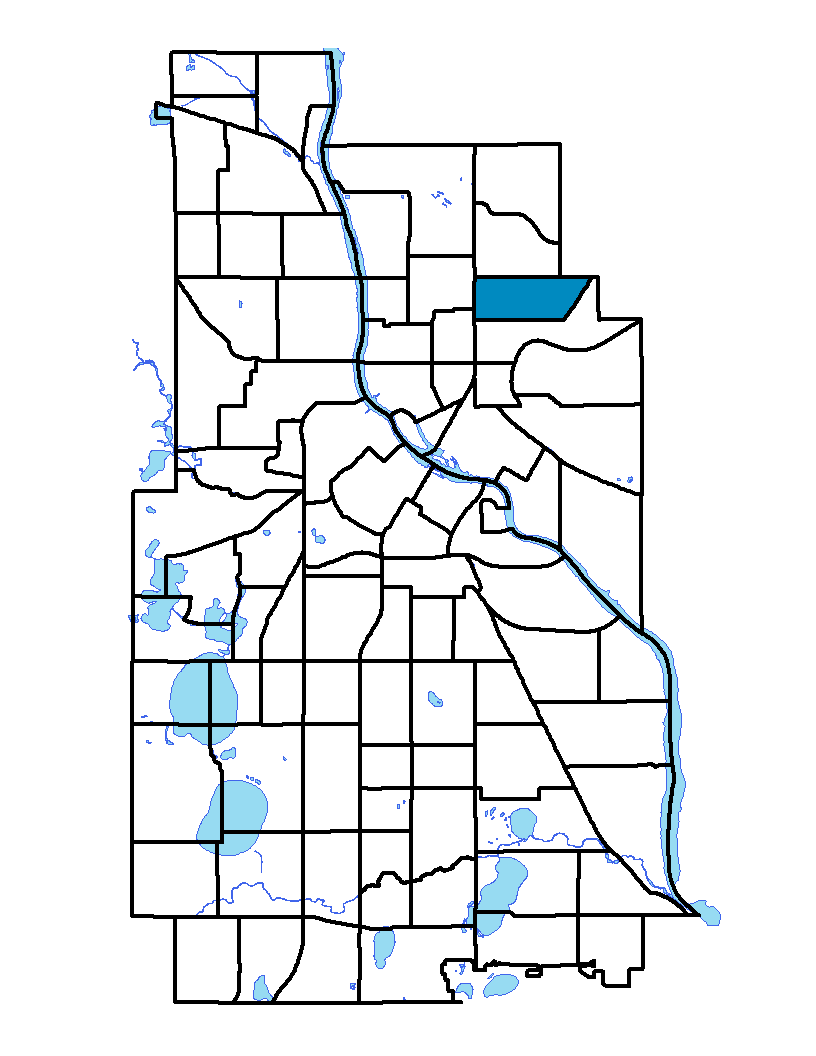Windom Park is in the Northeast community of Minneapolis. The neighborhood is bounded on the north by Lowry Avenue NE, on the west by Central Avenue NE, on the south by 18th Avenue NE and on the east by New Brighton Boulevard. Windom Park is named after William Windom, who served from the mid- to late-1800s as a United States senator from Minnesota and as secretary of the U.S. Department of Treasury. This is a mainly residential neighborhood; single-family dwellings tend to predominate in the eastern quadrant, while multifamily buildings are a feature in the western quadrant, particularly in the vicinity of Central Avenue. Central Avenue, the neighborhood's western border, is a very active commercial corridor. Many ethnic restaurants line the street, showing how new immigrants are reshaping the neighborhood.
To learn more about the neighborhood association visit: www.windompark.org
Indicator Details
| Indicators | Primary Domain | Indicator Value |
Rank |
Tier |
|---|---|---|---|---|
| Reading Proficiency | Educational Opportunities | -% | - | Data N/A |
| School Proximity to Traffic | Environmental Hazards | -% | - | Data N/A |
| Chronic School Absence | Health Systems and Public Safety | -% | - | Data N/A |
| High School Graduation Rate | Educational Opportunities | -% | - | Data N/A |
| School Readiness Scores | Educational Opportunities | -% | - | Data N/A |
| Residential Proximity to Traffic | Environmental Hazards | 0.0% | 1 | Top |
| Vacancy Rates | Housing | 3.2% | 7 | Top |
| Long-Term Unemployment | Employment Opportunities | 3.0% | 8 | Top |
| Access to Parks and Open Space | Natural Areas | 19.6% | 11 | Top |
| Low Birth Weight | Health Systems and Public Safety | 3.5% | 11 | Top |
| Food Desert | Neighborhood Characteristics | 50.0% | 11 | Top |
| Violent Crime | Health Systems and Public Safety | 30.1 | 16 | Top |
| Local Business Vitality | Economic Health | 60.0% | 21 | Top |
| Proximity to Brownfield Sites | Environmental Hazards | 1.2% | 23 | Top |
| Walkability | Neighborhood Characteristics | 69 | 28 | Top |
| Motor Vehicle Collisions | Health Systems and Public Safety | 2.9 | 28 | Top |
| Voter Participation | Social Cohesion | 28.5% | 36 | Middle |
| Adult Educational Attainment | Educational Opportunities | 92.5% | 36 | Middle |
| Blood Lead Levels in Children | Housing | 3.6% | 36 | Middle |
| Residential Mobility | Social Cohesion | 81.7% | 37 | Middle |
| Household Transportation Costs | Transportation | 16.4% | 37 | Middle |
| Preschool Enrollment | Educational Opportunities | 54.5% | 37 | Middle |
| Preventable Hospitalizations | Health Systems and Public Safety | 2.1 | 38 | Middle |
| Access to Mainstream Financial Services | Economic Health | 22.4% | 39 | Middle |
| Pedestrian Connectivity | Transportation | 133 | 41 | Middle |
| Proximity to Superfund Sites | Environmental Hazards | 13.3% | 42 | Middle |
| Public Assisted Households | Employment Opportunities | 25.3% | 51 | Middle |
| Excessive Housing Cost Burden | Housing | 30.1% | 51 | Middle |
| Travel Time to Work | Employment Opportunities | 22.7 minutes | 51 | Middle |
| Business Retention | Economic Health | 0.6% | 55 | Middle |
| Commute Mode Share | Transportation | 23.0% | 56 | Middle |
| Age of Housing | Housing | 92.1% | 58 | Middle |
| Toxic Releases from Facilities | Environmental Hazards | 37.3% | 59 | Bottom |
| Offsite Alcohol Outlets | Neighborhood Characteristics | 2 | 61 | Bottom |
| Employment Rate | Employment Opportunities | 63.5% | 62 | Bottom |
| Transit Accessibility | Transportation | 216.7 | 66 | Bottom |
| Tree Cover | Natural Areas | 25.6% | 74 | Bottom |

